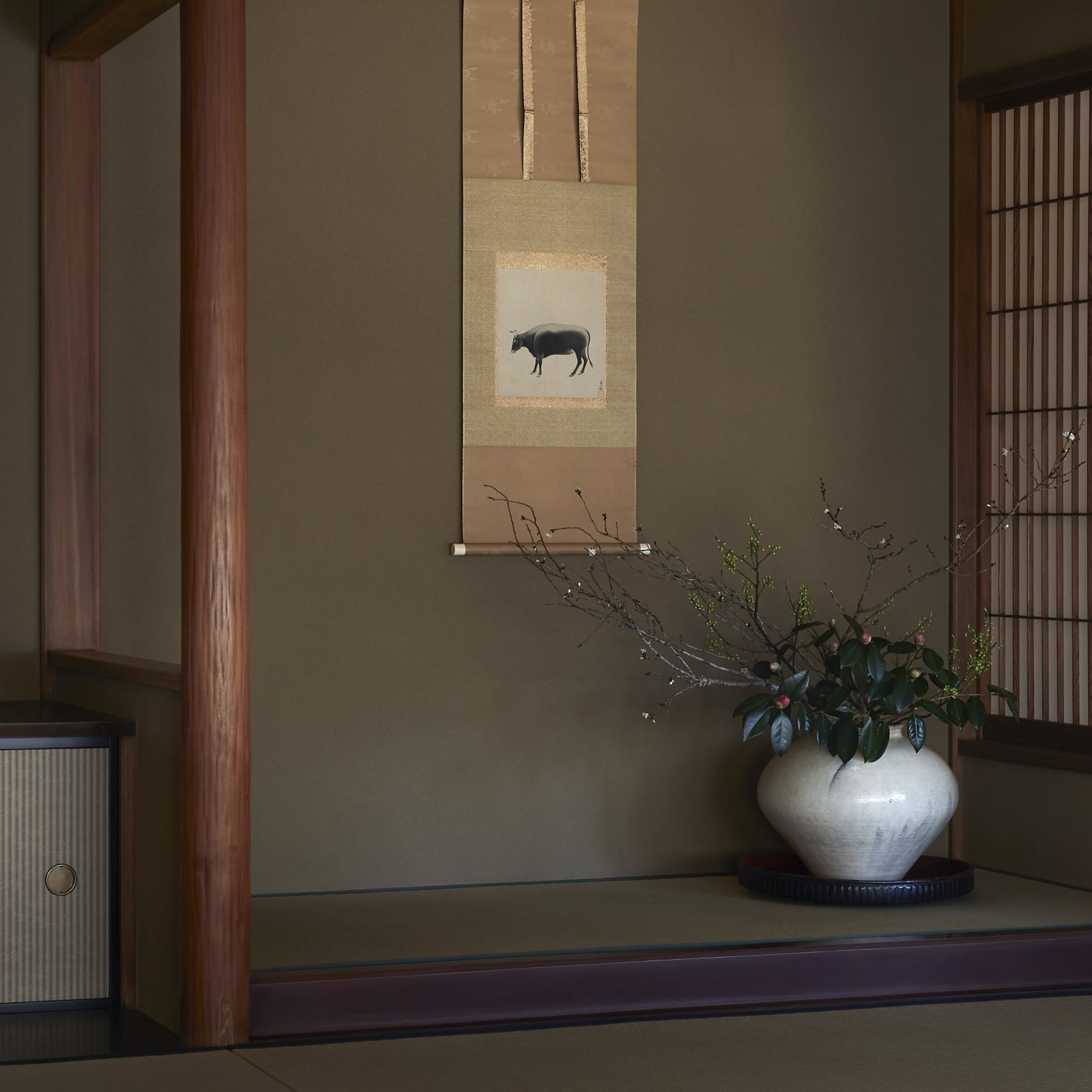Kobayashi Kokei (1883−1957)
Ox
Ink on silk, hanging scroll
With a Tokyo Art Club certification, a box signed by the artist, double boxed
Seal: Kokei
25.5 x 23.5 cm
116 x 38 cm (overall)
Further images
It is an ox depicted with a sophisticated monochromatic in ink on a piece of small paper, which is a work immersed in a sense of intensity. Of Kobayashi Kokei’s oxen paintings, the best known work is Oxen which was submitted to the thirtieth exhibition of Saiko inten, or the Reorganized Japan art institute exhibition, in 1943. It is a scene that two oxen, black and white respectively, confront each other with their horns. At that time, the two oxen were criticized for the lack of energy; nevertheless, what Kokei aimed at was to manifest the volume of the body through the application of rich ink and the use of delicate line rather than merely to depict two dynamic animals. In the meanwhile, art critics more focused on the profoundness that Kokei had, highly acclaiming the Oxen as “bizarre embodiment of wisdom and passion,” commented Suzuki Susumu and “something beyond mystery,” stated Haruyama Takematsu.
Contrary to the above mentioned Oxen, the present work obviously is small in size. Yet it reveals the coherent aesthetics, imparting the feeling of a sublime disposition similar to that of Song and Yuan dynasties painting segments.
Kobayashi Kokei (nihonga painter; 1883−1957)
Niigata-born nihonga painter. His real name is Shigeru. Moved to Tokyo and became a student of Kajita Hanko. Recognized as three exceptional painters at Inten (Japan Art Institute) together with Maeda Seison and Yasuda Yukihiko. Based on the nihonga tradition, he established a refined neo-classical style with modest expressions through incorporating realism and decorativeness. Appointed Tokyo School of Fine Arts professor. Designated as an Imperial Court Artist and a Person of Cultural Merit. Member of the Japan Art Academy. Received the Order of Culture.
Contrary to the above mentioned Oxen, the present work obviously is small in size. Yet it reveals the coherent aesthetics, imparting the feeling of a sublime disposition similar to that of Song and Yuan dynasties painting segments.
Kobayashi Kokei (nihonga painter; 1883−1957)
Niigata-born nihonga painter. His real name is Shigeru. Moved to Tokyo and became a student of Kajita Hanko. Recognized as three exceptional painters at Inten (Japan Art Institute) together with Maeda Seison and Yasuda Yukihiko. Based on the nihonga tradition, he established a refined neo-classical style with modest expressions through incorporating realism and decorativeness. Appointed Tokyo School of Fine Arts professor. Designated as an Imperial Court Artist and a Person of Cultural Merit. Member of the Japan Art Academy. Received the Order of Culture.









